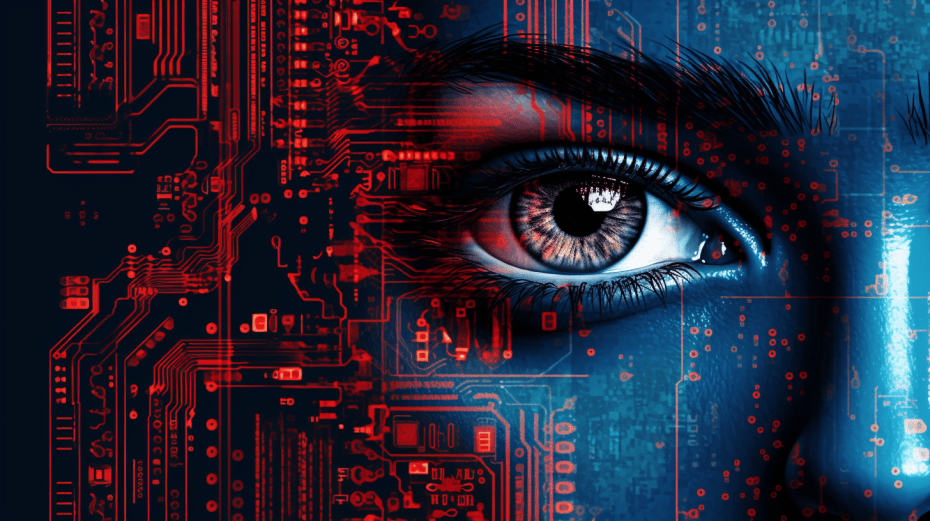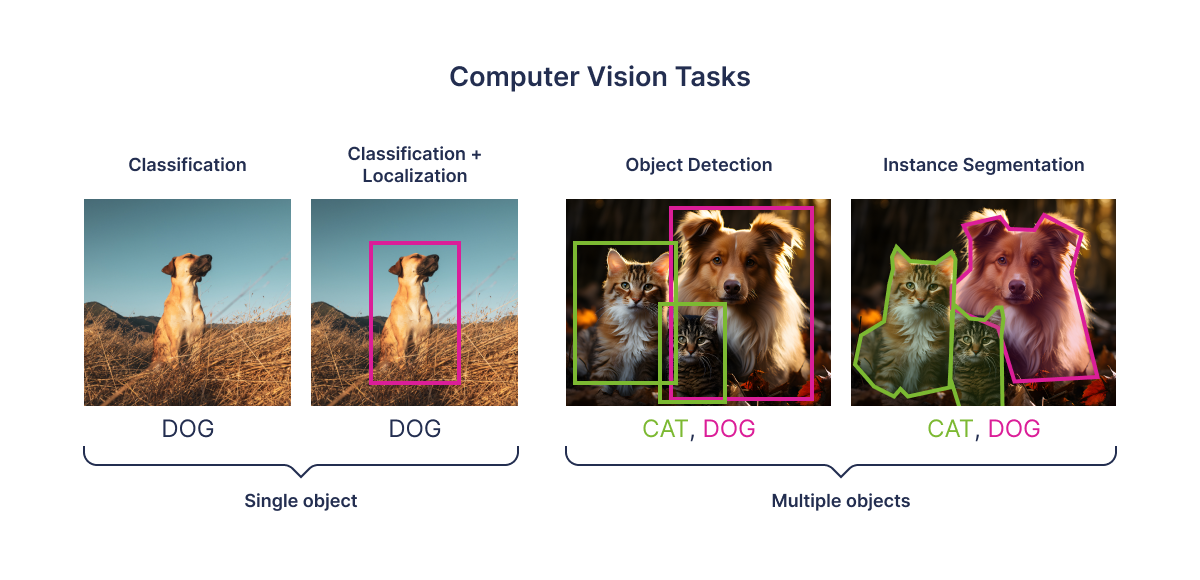Computer vision software development is revolutionizing industries by harnessing the power of vision technology to drive innovation and efficiency. From enhancing security measures to enabling autonomous vehicles, the possibilities are endless in this rapidly evolving field.
As we dive deeper into the intricacies of computer vision software development, we uncover the key components, challenges, popular tools, and real-world applications that shape the landscape of this cutting-edge technology.
Overview of Computer Vision Software Development

Computer vision is a field of artificial intelligence that enables machines to interpret and understand the visual world. It involves the development of algorithms and techniques that allow computers to extract information from images or videos, similar to how humans perceive and analyze visual data.Computer vision software development refers to the process of creating applications and systems that can automatically process and analyze visual data.
This includes tasks such as image recognition, object detection, facial recognition, and image segmentation. Developers use various programming languages and libraries to build computer vision software that can perform complex visual tasks accurately and efficiently.
Importance of Computer Vision in Various Industries
Computer vision technology has a wide range of applications across different industries, revolutionizing processes and enhancing efficiency. Here are some key industries where computer vision plays a crucial role:
- Automotive Industry: Computer vision is used in autonomous vehicles for detecting and recognizing objects on the road, enabling safe navigation and collision avoidance.
- Retail Sector: Retailers use computer vision for inventory management, customer tracking, and personalized shopping experiences through visual search.
- Healthcare: In healthcare, computer vision aids in medical imaging analysis, disease diagnosis, and surgical assistance, improving patient care and outcomes.
- Security and Surveillance: Computer vision is essential for monitoring and analyzing video feeds to detect anomalies, identify potential threats, and enhance overall security measures.
Key Components of Computer Vision Software Development

Computer vision software development relies on a combination of key components to enable machines to interpret and understand visual information. These components work together to process images and videos, allowing computers to recognize objects, patterns, and movements.
Role of Algorithms
Algorithms play a crucial role in computer vision software by providing the logic and instructions for analyzing visual data. These algorithms are designed to extract features, detect patterns, and make decisions based on the information captured by cameras or other imaging devices.
Common algorithms used in computer vision software include image segmentation, object detection, and image classification.
- Image Segmentation: Algorithms segment images into different regions based on color, texture, or other visual properties. This helps in identifying objects and boundaries within an image.
- Object Detection: Algorithms detect and locate objects within an image or video stream, enabling tasks like facial recognition, gesture detection, and autonomous driving.
- Image Classification: Algorithms classify images into predefined categories or labels, allowing machines to recognize and differentiate between different objects or scenes.
Hardware Requirements, Computer vision software development
Developing computer vision software requires hardware components capable of processing and analyzing visual data efficiently. The hardware setup typically includes cameras or sensors for capturing images, high-performance processors for running complex algorithms, and sufficient memory for storing and manipulating visual data.
It is essential to have a powerful GPU (Graphics Processing Unit) to accelerate the computation-intensive tasks involved in computer vision software development.
- Cameras or Sensors: High-quality cameras or sensors are needed to capture clear and detailed images for analysis. Different types of cameras, such as RGB cameras, depth cameras, and thermal cameras, may be used based on the specific requirements of the application.
- Processors: CPUs (Central Processing Units) and GPUs are essential for executing algorithms and processing image data. GPUs, in particular, are well-suited for parallel processing tasks in computer vision applications.
- Memory: Sufficient RAM (Random Access Memory) is required to store image data, intermediate results, and model parameters during the processing pipeline. Adequate memory capacity ensures smooth operation of the software.
Popular Tools and Frameworks for Computer Vision Software Development
When it comes to developing computer vision software, there are several popular tools and frameworks that developers can utilize to create powerful applications. These tools offer a wide range of functionalities and features to help streamline the development process and enhance the performance of computer vision applications.
Popular Tools for Computer Vision Development
- OpenCV: OpenCV is one of the most widely used open-source computer vision libraries. It provides a comprehensive set of tools and functions for image processing, object detection, and machine learning.
- TensorFlow: Developed by Google, TensorFlow is a popular deep learning framework that offers support for computer vision tasks. It provides a high-level API for building neural networks and executing complex computations efficiently.
- PyTorch: PyTorch is another deep learning framework that is commonly used for computer vision applications. It offers dynamic computational graphs and a flexible platform for building custom neural networks.
Comparison of Different Frameworks
- OpenCV vs. TensorFlow: While OpenCV is focused on computer vision tasks, TensorFlow offers a more general-purpose approach to deep learning. Developers often choose between the two based on the specific requirements of their project.
- TensorFlow vs. PyTorch: TensorFlow and PyTorch are both powerful deep learning frameworks, but they have different strengths. TensorFlow is known for its scalability and production-readiness, while PyTorch is favored for its flexibility and ease of use.
- OpenCV vs. PyTorch: OpenCV is primarily used for traditional computer vision tasks such as image processing and feature detection, while PyTorch is more suited for deep learning applications that involve neural networks and complex algorithms.
Advantages and Disadvantages of Specific Tools or Frameworks
- OpenCV: Advantages include a vast array of pre-built functions for image processing and computer vision tasks, but it may lack some of the advanced deep learning capabilities found in frameworks like TensorFlow or PyTorch.
- TensorFlow: Advantages include strong support for deep learning tasks and a large community of developers, but it can be complex to learn and implement for beginners.
- PyTorch: Advantages include a more intuitive interface and dynamic computation graph, making it easier to experiment with new models. However, it may not have the same level of optimization and deployment tools as TensorFlow.
Challenges in Computer Vision Software Development
Developing computer vision software comes with its own set of challenges that developers often face. These challenges can range from data quality issues to scalability concerns, impacting the overall performance of computer vision algorithms.
Data Quality Impact on Computer Vision Algorithms
Maintaining high-quality data is crucial for the success of computer vision algorithms. Poor quality data can lead to inaccurate results and hinder the performance of the software. It is essential to ensure that the training data is clean, labeled correctly, and representative of the real-world scenarios the software will encounter.
Addressing Scalability Issues in Computer Vision Software
Scalability is another major challenge in computer vision software development. As the amount of data increases, the software needs to be able to handle the processing efficiently without sacrificing performance. To address scalability issues, developers can implement distributed computing techniques, utilize cloud-based solutions, or optimize algorithms for faster processing speed.
Applications of Computer Vision Software

Computer vision software has a wide range of applications across various industries, revolutionizing processes and tasks that were once manual or human-dependent. Let’s explore some of the real-world applications of computer vision software in different sectors.
Autonomous Vehicles
Computer vision software plays a crucial role in the development of autonomous vehicles, enabling them to perceive and interpret their surroundings to navigate safely. By using cameras and sensors, these vehicles can detect objects, pedestrians, road signs, and lane markings in real-time.
This technology is essential for achieving fully autonomous driving and enhancing road safety.
Healthcare
In the healthcare industry, computer vision software is used for various applications such as medical imaging analysis, disease diagnosis, surgical assistance, and patient monitoring. It helps healthcare professionals in detecting anomalies, identifying patterns, and making accurate diagnoses based on visual data from medical images.
Retail
Retailers leverage computer vision software to enhance customer experiences, optimize inventory management, and prevent theft. This technology enables stores to implement smart checkouts, personalized recommendations, and real-time monitoring of foot traffic. By analyzing customer behavior and preferences through visual data, retailers can improve their marketing strategies and operational efficiency.
Security
Computer vision software is increasingly being utilized in security systems for surveillance, access control, and threat detection. It can identify suspicious activities, recognize faces, and track movements in real-time to enhance security measures. From airports to public spaces, this technology aids in monitoring environments and responding quickly to potential security threats.These are just a few examples of how computer vision software is transforming industries and driving innovation across various sectors.
Final Wrap-Up
In conclusion, computer vision software development opens up a world of opportunities for businesses and individuals alike, paving the way for a future where vision technology is seamlessly integrated into our daily lives. Embracing this technological advancement is not just a choice but a necessity in staying ahead in today’s digital age.
Questions and Answers
What is the role of algorithms in computer vision software development?
Algorithms play a crucial role in computer vision software development by enabling machines to interpret and understand visual data, allowing for various applications such as image recognition and object tracking.
How can scalability issues in computer vision software be addressed?
Scalability issues in computer vision software can be addressed by optimizing algorithms, leveraging cloud computing resources, and implementing efficient data processing techniques to handle large datasets and complex computations.
What are some real-world applications of computer vision software?
Computer vision software is used in a wide range of industries, including healthcare for medical image analysis, retail for inventory management, security for surveillance systems, and autonomous vehicles for navigation and obstacle detection.
